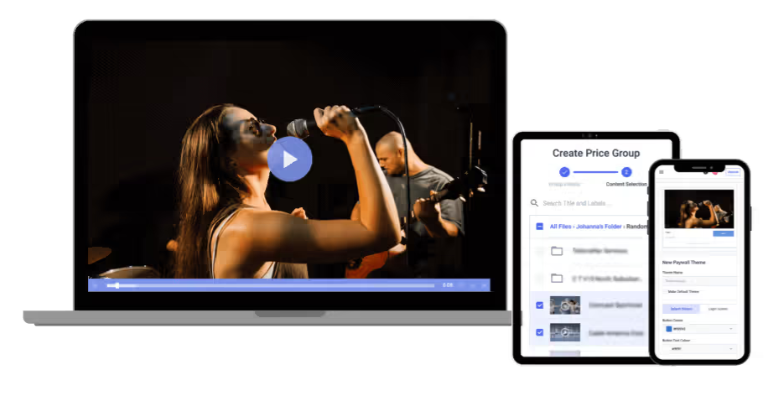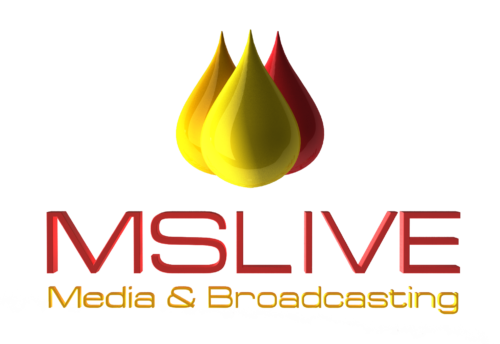
- May 13, 2023
- mslivestream333
- 0 Comments
- 765 Views
- 0 Likes
- Livestreaming
10 BEST Free Media Server Software for Windows and Linux
In the ever-evolving digital landscape, businesses are always looking for new ways to create videos that are interesting and informative and that will connect with their audience.
How many times a day do you use your mobile device to look something up? Your search results likely contain as many video results as they do written content. The influence of video content on overall online user behavior grows annually. For example, YouTube boasts that its platform watches one billion hours of video daily, translating into billions of individual video views daily.
Creating, storing, organizing, and monetizing compelling video content is essential to the growth and success of creators. To manage all these important tasks and maintain video quality, broadcasters are turning to video content management systems to help them reach their video monetization and distribution goals.
In this post, we will discuss what a video content management system is and what to look for in a video CMS. We will review 10 of the best video hosting CMS options for broadcasters looking for a well-rounded streaming experience.
What is Video Content Management?
A video streaming CMS stores and hosts content that can be repurposed in multiple ways.
Video content management systems are the process of organizing and managing your media content, including videos, text, and graphic imagery, in the most efficient way possible. Still, it takes care of many smaller details related to overall video performance as well. CMSs can automatically adjust video quality to reduce buffering, make video tags easily searchable, create playlists, and manage video and digital content.
This content is stored in a video content management system (CMS), designed for easy access to your content.
A content management system isn’t an unfamiliar concept to most of us. Imagine when you wanted to show a friend an old photo saved to your phone. To access it, you had to go into the image management system on your phone, which might be as simple as a folder called “Photos.”
So, what is a video CMS? It’s where your videos are stored and organized, where you can access them in the future for whatever you need them. A CMS for video content could be a simple folder or a much more powerful tool.
How Does a Video Content Management System Work?

With a video CMS, broadcasters can sort files by information such as topics and file size
At its most basic, a video CMS hosts, stores, categorizes, and organizes video content. It provides a central place to house all your small and large video files, both RAW and edited, and see key information about those files.
A video CMS uses specialized video management software to host, store, and label video content, allowing you to search and stream your entire library of files to find exactly what you’re looking for.
Let’s say you’re looking through your CMS for a video podcast you recorded on tips for entrepreneurs looking to start a new business. A CMS allows you to type in a keyword (“Entrepreneur tips,” for example) and presents you with all the video clips you have uploaded with that combination of terms attached.
A CMS for streaming video also has viewer-facing capabilities.
Suppose a viewer is watching that same video podcast about tips for entrepreneurs looking to start a new business. In that case, the streaming CMS analyzes the metadata on that individual video and combines your collection with other similar videos to suggest.
It’s a win-win scenario where your audience gets more of the content they are looking for without having to work for it while you reap the benefits of increased viewership and longer watch periods.
Key Features of Professional-Grade Video CMS
Some video hosting features are more valuable than others, depending on your unique streaming goals.
Not all video CMS are created equal. Some are good for beginner users, with their easy-to-navigate platforms and step-by-step instructions. For the more advanced user or someone producing a lot of content, a lower-level video CMS platform going to do the trick.
If you need robust video CMS streaming software with ample upload and storage options, a professional-grade video hosting CMS will be your best video CMS choice.
Enterprise video CMS platforms allow a more customized amount of features to meet the needs of professional business usage. Determine what features you need in a video CMS and find an online video platform that offers everything you’re looking for.
Batch Uploading Tools
Uploading your video files can be incredibly time-consuming, causing you to spend hours just getting one video ready to publish.
With bulk uploading tools, you can securely and efficiently upload multiple video assets into the CMS. That decreases the time you spend getting your videos ready and decreases the amount of bandwidth you need to process all these uploads.
Many video CMS platforms offer one or more options for bulk uploading tools, including
- Bulk upload option: This tool allows you to select multiple video files to upload at a time, and extra features, such as auto pause and resume, help protect you from frustrating unstable wifi connections.
- Dropbox integration: Some platforms, such as Mslive, have an integration that allows you to drag and drop your video assets into a special Dropbox folder without ever opening a browser. From there, the files are accessible inside the CMS, saving you storage space and bandwidth.
- FTP upload: FTP, or file transfer protocol, uploading allows for secure, fast video uploading through a client. The client connects to the FTP server, and you send your files for storage and use.
- Video library migration: If you’ve already got an extensive video library hosted on another video CMS platform, some video CMS software allows you to do a batch transfer of all your files.
Cloud Transcoding
When you film a video, it’s not always captured in a size suitable for viewing. Viewing a video on a mobile device may require a different file size than on a desktop computer, which is likely different from your camera’s file size when recording the video.
A professional-grade video hosting platform should have a built-in feature that automatically converts uploaded video files into various formats, allowing videos to perform their best on various devices.
Cloud transcoding tools also make it possible to stream video with an adaptive bitrate video player. This type of streaming sends the optimal rendition of the stream to each viewer based on their internet speed.
10 Best Video Hosting CMS Options
An online video management system comes in all shapes and sizes. Some are better for smaller content creators, and others are geared toward those who want to create, share and monetize a large body of work.
Each of these video CMS platforms allows users to store, organize, and share their content with a variety of viewers. So which is the best video content management system? The streaming platform that is right for your business depends on matching up your needs and goals with the features of the video hosting CMS.
That said, let’s take a look at the 10 best video hosting CMS options on the market.
1. Mslive

Mslive is equipped with a powerful video content management system.
Mslive is a video CMS that supports streaming of both live and private videos and on-demand video hosting. Mslive is one of the best video CMS options equipped with all of the tools broadcasters need for a well-rounded, professional video hosting experience.
Key Features:
- Video CMS functions for organizing libraries of 10,000+ videos
- Bulk video uploading
- Managed video migrations
- Robust video security features (AES encryption and IP restrictions)
- Advanced video and player API access
- Support for video monetization (AVOD, TVOD, and SVOD)
- 24/7 customer support is available via phone and email
- Access to advanced video analytics
- LMS Learning management system integration with Zoom live streaming
- Expo galleries video portal
- Adaptive multi-bitrate streaming
- Cloud-based video transcoding
- Ad-free streaming
Pros:
- Reliable video management
- Secure video sharing
- VOD and live stream hosting
- Business video hosting in China
- Mobile device support
- Live stream recording
- Detailed analytics
Cons:
- A minor learning curve for using all of the video management tools
Upload Guidelines and Specs:
- Minimum dimension: None (but 240p is the recommended minimum)
- Maximum dimension: 1080p or 4K (depends on the user’s hardware and internet)
- Aspect ratio: No restrictions (but 16:9 is the default)
- Max file size: None
- Max video length: None
- Total file storage: 10-1000GB (depends on plan)
- Compatible video formats: MP4 (preferred), MOV, M4V, M2V, AVI, MPG, FLV, WMV, MKV, WEBM, OGV, MXF, ASF, VOB, MTS
2. Wowza
Wowza offers several products geared towards video content management.
Wowza is a top-tier video content delivery system. It is feature-rich and provides a customizable video CMS for broadcasters. Wowza was founded in 2005 and includes live and on-demand live streaming capabilities.
Wowza offers two main products. The first is the Wowza Streaming Engine. This product is widely used for self-hosted streaming. The second is the Wowza Streaming Cloud, which includes various features aimed at providing low-latency content access to global audiences.
Key Features:
- Live and VOD hosting
- Host-you-own streaming server product
- RESTful API access for greater customization
- Cloud management portal
- Customer support
- Live stream recording
- Wide range of reliable security options
Pros:
- Audience engagement tools
- Performance monitoring and analytics
- Robust video security
- China video delivery
Cons:
- No video monetization
- Single-camera feeds only
- No video analytics
- Some limitations on management functions
Upload Guidelines and Specs:
- Minimum dimension: 240p (320 x 240)
- Maximum dimension: 4K (3840 x 2160)
- Aspect ratio: 16:9, 4:3
- Max file size: Not available
- Max video length: Not available
- Total file storage: 250 GB (depends on the plan)
- Compatible video formats: MP4, FLV, MP3, SMIL, AMLST, ID3, NGRP
3. Livestream

Livestream is a powerful platform owned by Vimeo
Vimeo is a major player in the online video space that started as a company focused on consumer-grade video hosting. However, Vimeo acquired Livestream in recent years, giving it the functionality and capability to make it a worthy professional video CMS.
Key Features:
- Easy-to-navigate video CMS
- Video privacy and security
- API tools for greater customization
- Video monetization (via pay-per-view)
- Tech support is available, but not 24/7 or on-demand
- Video analytics
Pros:
- Global content delivery
- Brand customization
- Secure video streaming
- Tools for promoting interaction and engagement
Cons:
- Some features are difficult for beginners to use
Upload Guidelines and Specs:
- Recommended dimension: 720p (1280 x 720)
- Aspect ratio: 16:9, 4:3
- Max file size: 3GB
- Max video length: Information not available
- Total file storage: Information not available
- Compatible video formats: MP4 (recommended)
Conclusion
For professional broadcasters and online brands, success is more than just creating great video content your audience wants to see. Having the right tools to help you store, organize, and monetize the content you create is essential to making the most of your talents without relying on secondary video-streaming services such as YouTube.
Suppose you want to control how your content is distributed and monetized. In that case, you need a robust content management system for videos like Mslive to make your job easier and less frustrating.
The right video content management systems let you upload, sort, manage, and distribute your videos to reach the most viewers possible and maximize your profits.
Are you ready to start with the best video CMS software for broadcasters and businesses?


Leave a Comment